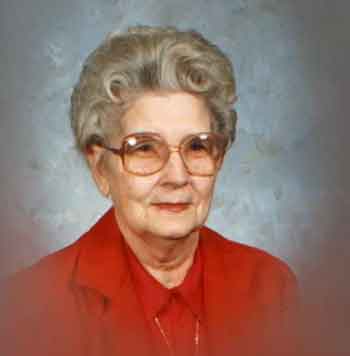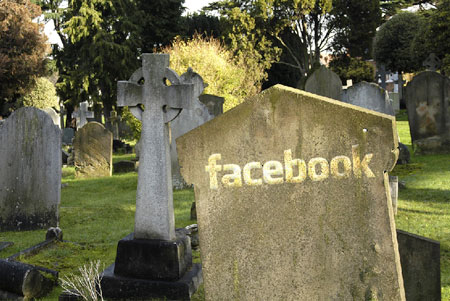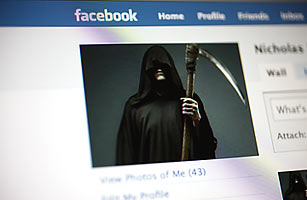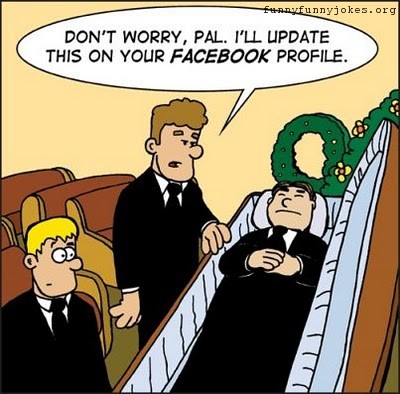Cole Imperi is the owner of Doth Brands, a creative agency that primarily serves the health, wellness, end-of-life and deathcare professions.
*~*~*~*~*~*~*~*~*~*~*~*~*~*~*~*~*~*~*~*
Right now, my godmother, aunt-in-law, and a guy I went to high school with are all on Facebook. Actually, most people I know are on Facebook; friends from all corners of my life, family I’ve never even met. All there, in one place.
I thought of my godmother last week on my way out of the office. When I got home, I logged into Facebook and posted a “<3” on her wall. I noticed that so had my mom, my sister and a few of my cousins.
I sat there, looking at her profile picture. It was the last one she put up before she died. And here I was a year later on the first anniversary of her death. She’s dead, just like a handful of other people I know on Facebook (like my aunt-in-law and a guy I went to high school with). Just like more than 6,000,000 people on Facebook. Their profiles are still active. People are still posting photos and comments on their walls.
Why do we do this?
Why do we visit the social media profiles of those who have passed on?
I have a friend who sends emails to her dad’s Gmail address. No one has ever accessed it since he died. It comforts her, she says. She feels like he’ll get those messages.
It seems to me that we do it because we can. I can ‘visit’ my deceased godmother anytime I have an Internet connection. Yet, her physical grave is a six-hour drive from me. It’s 2012, a time when we live a good part of our lives online. Why would we not also grieve online? This is a time when dealing with the physical remains is the simple part, or maybe just the first part, and the Dremains (digital + remains) are something that sort of hangs around, extending that person’s life in a funny sort of way.
Social media profiles and email addresses are still technically active—especially if the service providers haven’t been notified that the user is no longer living—and suddenly everything about that profile is just the leftovers from a life lived—Dremains, in the form of photos and status updates and gripes about all the election advertising or an unfortunate experience at a local mall.
And really, I’d argue that if anyone is hanging around after they die, they’re probably on the Internet and not hanging around a graveyard.
Email, message boards, chat rooms, social networks have become things we have to have. Usernames, passwords and profiles. All of these things are very much part of our daily lives. Guess how many of these things launched with preplanned ways to handle the deaths of their users? Basically none.
Only recently have online companies started to address the deaths of their users. And, because this is just how things are, some lawsuits and even more squabbles have erupted over how to handle these Dremains. Mom is dead, but her son wants her Facebook profile left up. Her daughter wants it deleted completely. “What did your Mom want?” the lawyers ask. Who knows?
What I realized the other day is that thanks to these Dremains, I’m able to visit all my dead in a more meaningful way to ME. I no longer need to go to a cemetery (and I never really did, anyway) to feel that connection. I can stare at components of a person’s life, rather than a rock with some dates and a dash carved into it.
We are generation 2.0 and death is not something so separated from our daily lives anymore. When I visit my godmother on Facebook, I’m visiting her life. When I visit her grave, I’m visiting her death. This is why I like having access to all the dead people I loved while they were living, all from the comfort of my iDevices and computers.
P.S. You should think about what you’ll be leaving behind, digitally. How do you want your Dremains handled?






